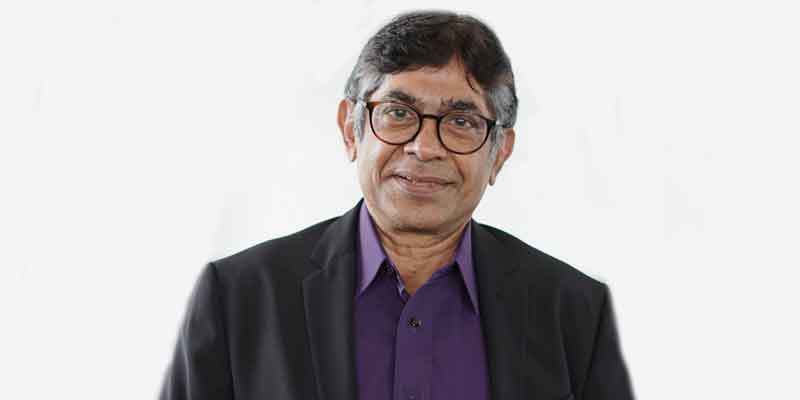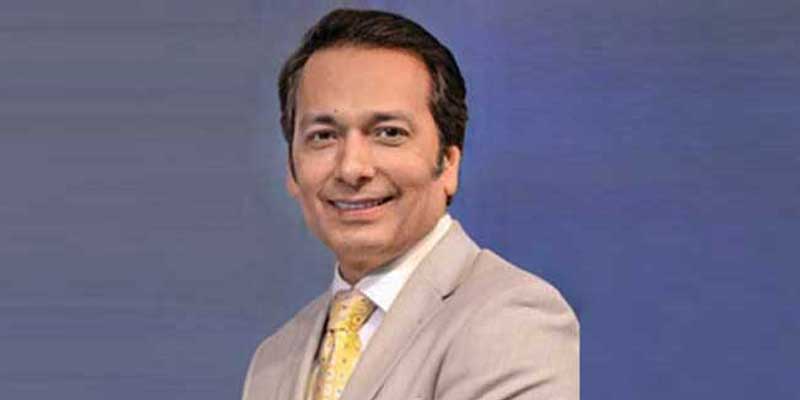Schedule a Call Back
ONDC will democratise and revolutionise digital commerce in India
 Interviews
Interviews- Feb 25,23

Open Network for Digital Commerce (ONDC), established last year, is a first-of-its-kind initiative globally to democratise e-commerce in India. T Koshy, MD & CEO, ONDC, is leading this initiative to increase e-commerce penetration in the country and make it available to everyone. Koshy has been a pioneer in Digital ID and social protection initiatives and has played a leadership role in many implementations and consulting projects globally including the UID project of India, the largest ID program in the world. He has played a key role in many digital transformation projects in India, including development of the Tax Information Network, formulation of IT strategy and IT architecture for the implementation of Goods & Service Tax (GST), etc. In this conversation with Rakesh Rao, Koshy elaborates on the roadmap for ONDC and how it will change the digital commerce landscape in India (and probably globally).
Recently, Open Network for Digital Commerce (ONDC) celebrated its first Foundation Day. To begin with, can you brief us the concept of ONDC?
During the Covid 19 pandemic, Minister of Commerce & Industry, Piyush Goyal, felt the need to improve access of the store owners to the end consumers and vice versa, especially for their day-to-day dealings. The pandemic put a pause on many of our physical interactions. So, the Ministry put together a committee to evaluate the possible solution for this using digital technology. The idea was not to look for a short-term solution, but something that could be transformative for the whole commerce sector. While attempting to look at the challenges, they realised that the reach of digital commerce is very limited in India. Although, all of us might be heavily using it, the penetration is only to the upper segment of society even today. Despite the growth in the last few years, it is only about 5-6 per cent on the buyer side and only 1 per cent on the seller side. We wanted to look at something that will address this issue in a big way.
India had been going through a journey of building digital public tools over the past few years like Unified Payments Interface (UPI) that has brought a transformation on the payment side of any transaction. So, the Expert Committee working with the Department for Promotion of Industry and Internal Trade (DPIIT) felt if we can revolutionise the payment side then why can't we do the same on the transaction side? That's when the idea of building an open network came up, which will democratise digital commerce. The idea was to have an open network which will provide equal opportunity to big and small sellers as well as big and small buyers, to enter into a transaction based on what the seller is offering and what the buyer wants and not being influenced by any intermediary in between.
So, how was the journey in the first year?
One year ago, we incorporated Open Network for Digital Commerce (ONDC) as a company. We need to appreciate that it is a network and there is no central system (like in case of a bank or stock exchange). This network will be meaningful only when different systems and applications both from the buyer and sellers come together and create a certain threshold volume by following the ONDC protocol. Our approach has been to grow organically.
In the first week of October 2022, we decided to go into the beta testing mode where we opened the ONDC network to a limited set of buyers in Bangalore. When we started, we had only about 400 merchants and, as of now, it has become 9,000 merchants which cover grocery, food, fashion and social enterprises brought together by small farmers' associations. They are selling their products directly on the network without any intermediaries. All these things demonstrate the immense potential of ONDC. Currently, we have about 8200 transactions happening in a day. But our approach in the coming months is to increase the publicity and also provide certain incentives to buyers and sellers to jumpstart this network to help it reach a critical mass.
At present, how many seller platforms have joined ONDC? How do you intend to scale it up?
There are six buyer platforms currently—Paytm, Meesho, IDFC FIRST Bank, My Store and Craft Villa. We are expecting that the PhonePe will go live very soon. Similarly, five logistics platforms like LoadShare, Grab, Dunzo, Delhivery, and Shiprocket are available in the network. On the seller side, around 20 platforms are making about 9000 merchants available in the network. We are expecting that by end of March, this number will become 20,000 and there will be explosive growth with a variety of segments. We started with grocery, food and some part of fashion; but, in days to come, various segments like beauty and personal care, electronics, and home appliances will be added to the network.
We are also experimenting with mobility solutions (for rides). In fact, we have a small pilot scale project running in Kochi and Bangalore and we expect to build it up further. So, ONDC is working on various solutions. In long term, we expect any product or service (that can be catalogued) will be made available in this network using diverse kinds of buying platforms like banking, telecommunication, or fintech, which will help their customers to buy any products & services.
How will ONDC transform the digital commerce space in India (and globally)?
One thing unique about e-commerce in India as well as internationally is that they are closed-wall gardens. It means that if you are a seller on one platform, you are visible only to the buyers on that platform and vice versa. The challenge for sellers is that they have to choose and register themselves to platforms where they think their customers are. To get visibility across two platforms, sellers have to go through two processes, technology, customer support, etc.
Now, in an open network like ONDC, if you are a seller on any platform, you are visible to the buyer on any platform which means suddenly the buyer population will practically become large. Similarly, if you are a seller on any platform, you are visible to the entire population of buyers. This is the biggest disruption. The power is now with the buyer and the seller but not with the intermediary.
MSMEs are one of the very major segments contributing to the economy. But, they may not be digitally equipped. How can MSMEs benefit from ONDC platform?
Today, MSMEs have limited opportunity as large enterprises with big marketing budget get the selling priority. But, on ONDC, which is an open network, everybody gets an equal opportunity. However, the challenge is MSMEs are not able to leverage this opportunity. That's why we are working with entities like Small Industries Development Bank of India (SIDBI), National Bank for Agriculture and Rural Development (NABARD) and MSME Ministry who are establishing intermediaries to work closely with MSMEs to help them digitise and make their catalogue visible.
For example, we have on board eight to ten ‘Kanjivaram Silk’ weavers (as sellers) and about 35 to 40 farmer producer organisations who are selling diverse kinds of products made by MSMEs. Examples like these are going to empower small enterprises. ONDC is taking special effort to educate, develop systems, processors and tools, etc to bring MSMEs on board. It is not going to happen overnight, but now that they have the opportunity, we need to provide them with handholding. This will give us good results in the near future.
Are there plans to introduce industrial products as well on ONDC?
Yes, we would like to see many B2B players becoming a part of the network, which we expect to happen very soon. Anybody who has a product to sell can join the ONDC network and utilise the opportunity.
How will this network become economically sustainable?
ONDC network is different from other seller platforms. One, there will be a strong competition on ONDC so that nobody can have a monopoly. Second, it will encourage innovation and specialisation. For example, a logistics player in Gujarat offering specialised (customised) hyper local delivery is also equally visible on our network. Hence, with innovation, specialisation and increased competition all coming together, ONDC can create a reasonably successful business opportunity to all participants.
You have over 25 years of working experience as a part of India's journey in the digital economy. How has this helped you in leading ONDC?
My past experience has helped me to appreciate the challenges in large-scale transformation projects. It has taught me that India is a diverse set of people with a wide range of expectations and capabilities, both on the buying as well as seller side. We need to develop solutions that are meaningful for all of us, and we should be willing and patient to build it step by step as it is not any magic like ‘Abracadabra’. These learning are helping me to develop our strategies and make things possible.
What are your growth plans for ONDC for 2023 & beyond? By when, will ONDC be operational Pan India?
Currently, the merchant base is building up on the network, which is available practically in 80 to 85 cities. ONDC network is open for all and will grow gradually with a rise in participants. For example, when UPI (which is now omnipresent) was launched six years ago, it was available only in limited locations with few transitions. But, it grew gradually and now is used everywhere in the country. In the same way, ONDC will also take an organic growth path.
Related Stories

Funding MSMEs During Economic Flux
Micro, Small, and Medium-sized Enterprises (MSMEs) are the backbone of India’s economy, contributing 30 per cent to the nation's GDP and 45 per cent to its exports.
Read more
Will revised MSME classification solve their funding puzzle?
Only 14 per cent of credit needs of Micro, Small and Medium Enterprises (MSMEs) - the backbone of India's economy - are met through formal channels. The revised MSME classification may mark a pivota..
Read more
Will the US tariff war add to MSMEs’ funding woes?
While Micro, Small and Medium Enterprises (MSMEs) continue to face barriers in accessing funds (due to high collateral norms, lack of credit history, slow approvals, etc), the new tariff war could a..
Read more













